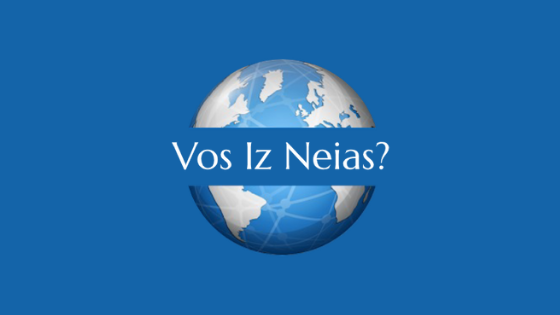n an era where individualism often takes precedence, the significance of community in nurturing and sustaining Jewish identity cannot be overstated. The communal aspects of Jewish life—ranging from religious practices and educational initiatives to social support systems—play a crucial role in preserving cultural heritage and fostering a strong sense of belonging. This article explores how contemporary Jewish communities are reinforcing Jewish identity through a blend of tradition and modernity.
1. The Power of Shared Rituals and Traditions
Jewish rituals and traditions are foundational to Jewish identity. They provide a sense of continuity and connection to the past. Observing Shabbat, celebrating Jewish holidays, and participating in life-cycle events such as Bar and Bat Mitzvahs serve as communal touchstones that reinforce Jewish values and practices.
In modern times, Jewish communities are finding innovative ways to celebrate these traditions. For example, many communities have embraced virtual platforms to conduct services and celebrate holidays, making it easier for members who are geographically dispersed or have mobility challenges to participate. These adaptations ensure that traditional practices remain accessible and relevant in a digital age, while still fostering a strong sense of community.
2. Education as a Cornerstone of Community Life
Education is a critical component in strengthening Jewish identity. Jewish educational institutions—such as day schools, yeshivas, and Hebrew schools—play a pivotal role in imparting religious knowledge, values, and cultural literacy to younger generations.
In recent years, there has been a growing emphasis on incorporating modern educational approaches into Jewish learning. Interactive technology, experiential learning, and interdisciplinary methods are being used to make Jewish education engaging and relevant. For instance, some schools use digital tools to enhance the study of Torah and Jewish history, while others offer programs that combine traditional learning with contemporary issues such as social justice and environmental stewardship.
3. Building Community Through Social Initiatives
Community-building is an integral part of Jewish life, encompassing both social and charitable activities. Organizations and synagogues often host events and initiatives that bring people together, strengthen bonds, and address communal needs.
Social initiatives such as community dinners, volunteer opportunities, and support groups create a network of care and connection. These activities not only address immediate needs but also foster a sense of belonging and shared purpose. For instance, community kitchens that provide meals for the needy or social action committees that engage in advocacy work help to embody Jewish values of tzedakah (charity) and tikkun olam (repairing the world).
4. Embracing Diversity Within the Jewish Community
Jewish communities today are more diverse than ever, encompassing a wide range of backgrounds, practices, and beliefs. Embracing this diversity while maintaining a unified sense of identity is an ongoing challenge and opportunity for communal growth.
Many communities are working to be more inclusive and representative of this diversity. Initiatives such as multicultural programs, inclusive worship services, and dialogues about different Jewish experiences help bridge gaps and build solidarity among members from varied backgrounds. These efforts reflect a commitment to ensuring that every individual feels valued and included, contributing to a richer and more dynamic communal life.
5. Leveraging Technology to Connect and Engage
Technology has become a vital tool in fostering community engagement and strengthening Jewish identity. From online learning platforms and virtual prayer services to social media groups and digital storytelling, technology offers new avenues for connection and participation.
For example, online platforms enable synagogues to offer live-streamed services and interactive classes, making it easier for members to stay engaged regardless of physical location. Social media provides a space for sharing news, events, and personal stories, creating a virtual community that complements physical gatherings. Technology, when used thoughtfully, can enhance the communal experience and support the continuity of Jewish life.
6. Intergenerational Connection and Mentorship
Connecting different generations within the Jewish community is essential for transmitting values and traditions. Programs that facilitate intergenerational interactions, such as mentorship initiatives and collaborative projects, help to bridge the gap between young and older members.
For instance, some communities have developed programs where older adults mentor young people, sharing their experiences and wisdom. These relationships not only provide valuable guidance to younger members but also foster a sense of continuity and connection across generations. Additionally, family-centered events and educational programs that include all age groups help to create a shared sense of heritage and identity.
7. Addressing Contemporary Challenges
The Jewish community faces various contemporary challenges, including assimilation, interfaith relationships, and changing family structures. Addressing these challenges requires thoughtful engagement and adaptation.
Community leaders and organizations are actively working to address these issues by creating inclusive and supportive environments. For example, programs that focus on integrating interfaith families, supporting single-parent households, and addressing the needs of modern Jewish families are essential for maintaining a vibrant and resilient community.
8. Celebrating Community Achievements and Contributions
Acknowledging and celebrating the achievements and contributions of community members can reinforce a positive and cohesive communal identity. Recognizing milestones, accomplishments, and acts of service helps to build pride and encourage continued engagement.
Events such as awards ceremonies, community appreciation days, and public acknowledgments of individual and collective successes contribute to a sense of shared accomplishment and belonging. Celebrating these achievements highlights the value of each member’s contributions and strengthens the overall fabric of the community.
Conclusion
The role of community in strengthening Jewish identity is profound and multifaceted. Through shared rituals, educational initiatives, social programs, and technological engagement, Jewish communities are effectively navigating the challenges of modern life while preserving their rich heritage. By embracing diversity, fostering intergenerational connections, and addressing contemporary issues, communities are ensuring that Jewish identity remains vibrant and relevant for future generations.
As we look to the future, the continued focus on community will be crucial in sustaining the values, traditions, and sense of belonging that define Jewish life. Through collective effort and innovation, the Jewish community will continue to thrive and adapt, reinforcing its identity and enriching the lives of its members.
